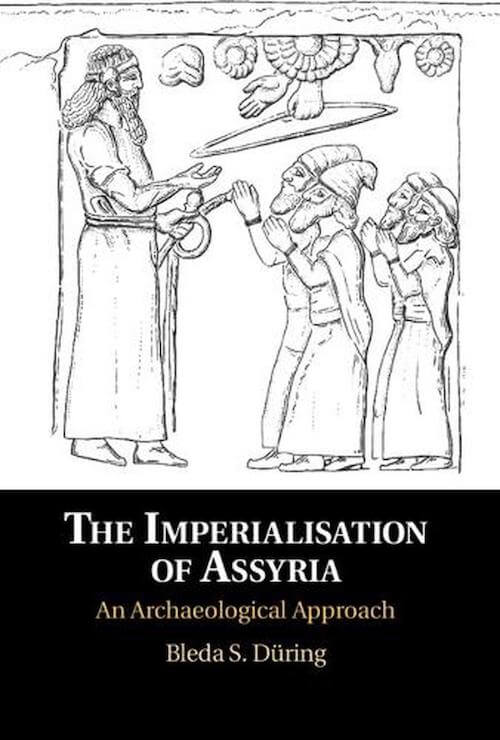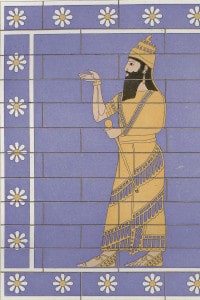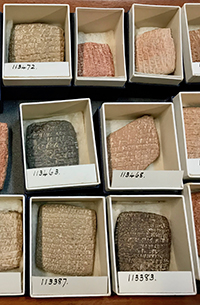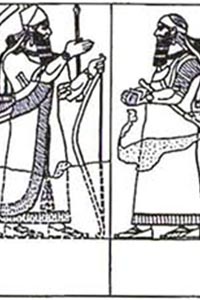
Not a Friend of ASOR yet? Sign up here to receive ANE Today in your inbox weekly!

July 2023
Vol. 11, No. 7
The Remarkable Rise of Assyria: A Reassessment
By Bleda S. Düring
Assyria is one of the most remarkable imperial states in global history, often celebrated as the first “world empire”. At its peak, during the reign of King Esarhaddon, the Assyrian Empire encompassed a large part of West Asia and Egypt, an extent that was unprecedented at that time in history. Assyria’s achievements were astounding, as manifested in the creation of capitals of unprecedented size and splendor, the construction of enormous irrigation infrastructures, and the complete makeover of the Assyrian heartland. There were no other competing polities of similar magnitude in the Iron Age, a situation that is markedly different from the preceding Late Bronze Age, in which Assyria was one of three great powers that balanced each other out: the Egyptians, the Hittites, and the Assyrians.
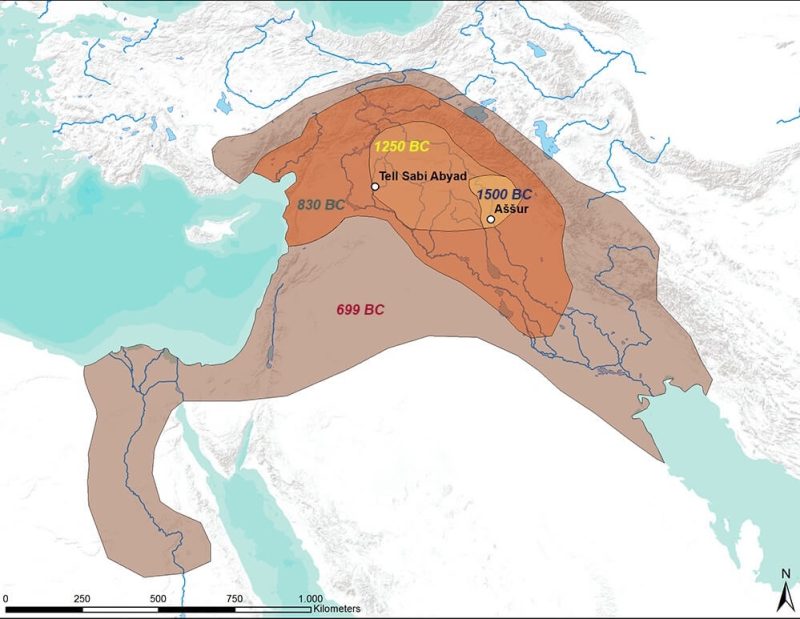
Given the success of the Assyrian Empire in the Iron Age, the question of why this state was so successful where others were not is an interesting one. How can we understand the rise of Assyria and which practices, or repertoires of rule, made Assyria more resilient than the Hittites and Egyptians, neither of which recovered from the difficult years at the end of the Late Bronze Age? This is the question I tackle in my recent book, The Imperialisation of Assyria – An Archaeological Approach , which takes a longue durée perspective on the rise of imperialism in Assyria. In it, I argue that we must focus on the remarkable transformation from a minor city-state in Upper Mesopotamia to the first world empire and on the formative stages of Assyria, rather than its floruit in the Iron Age.
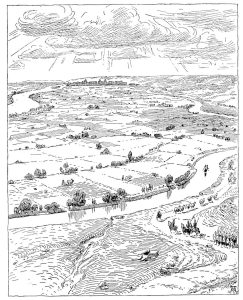
Farmlands in the Tigris Valley next to Assur as drawn by Walter Andrea more than a century ago (expedition 1903-1914).
Assyria developed from the small city of Assur, located on the east bank of the Tigris near the confluence with the Lesser Zab. The Tigris floodplain provided ample farmland to feed the population of the city, which can be estimated to have been around 10,000 people in the early second millennium BCE, and the city was located at an important crossroads of long-distance routes along which trade caravans would have traveled.
However, our knowledge of Assur and Assyrians in the Middle Bronze Age derives mainly from Kültepe Kanesh, located approximately 850 kilometers from Assur in Central Anatolia. Here, thousands of cuneiform tablets allow us to reconstruct long-distance trade managed by resident Assyrians in great detail. These texts also inform us that the Assyrian king was mainly a steward of the cult of Assur and a chairman presiding over city-assembly meetings rather than an autocrat. There is little at this stage about Assyria that suggests it would develop into an imperial state.
The rise of Assyria as a state of regional importance in Northern Mesopotamia was an unintended consequence of the battles fought by the ascendant Hittite Empire under King Suppiluliuma I, who broke the power of the Mitanni, of which Assyria was a vassal at the time. It is under these conditions that the Assyrians managed to assert their independence and gradually started to annex the remnants of the Mittani territories east of the Euphrates. Historical and archaeological sources suggest that the Assyrians were initially reluctant to take control over the territories in the former lands of the Mittani. It was only after it had become clear that periodic military expeditions to the region were not successful in creating docile and tribute-paying vassals that the Assyrians finally embarked on a trajectory of conquest and annexation. This is the moment when the imperial encounter took shape.
The archaeological and historical evidence for this early phase of the Assyrian Empire, also known as the Middle Assyrian period (ca. 1350-1050 BCE), has increased significantly over the past decades, with key evidence emerging from the Balikh Valley, the Upper Tigris region, the Lower Khabur, the Middle Euphrates, and most recently, Iraqi Kurdistan. The historical evidence shows us that the administration of the newly acquired territories was almost exclusively in the hands of Assyrians, and the western provinces of Assyria were effectively farmed out to members of a secondary branch of the royal family. It appears that the powerful families of Assyria stood to gain much from the annexation of the new western territories.
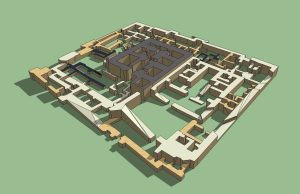
3D reconstruction of Level 5 of the Tell Sabi Abyad dunnu, ca. 1184-1170 BCE. Produced by Tijm Lanjouw.
Assyrian commoners, as well, migrated west as settlers. One place where we know they went to is Tell Sabi Abyad, in the Balikh Valley, where they established a dunnu — a kind of fortified farming estate typical of the Middle Assyrian period — which has been diligently excavated by a Dutch team. At the time when this farming estate was created, the valley appears to have been inhabited only by mobile pastoralists. It is possible that the region had been purposefully depopulated in earlier Assyrian war expeditions, as from the outset of their imperial encounter, the Assyrians practiced large-scale deportations of people, often from peripheries to landscapes they wanted to develop. At the dunnu estate of Tell Sabi Abyad, an estimated 100 Assyrian men settled with their families, alongside 400 siluhlu — deportees of mainly Hurrian background.
The archaeology of Tell Sabi Abyad is best described as colonial. It was a fortified settlement with a perimeter wall and a dry moat, with two central buildings: a preexisting tower that was renovated and an elite residence adjacent to it. Surrounding these were a variety of barracks, workshops, and activity areas. The material culture is almost exclusively Assyrian: Assyrian-style mud bricks, toilets, pottery vessels, cuneiform tablets, seals, etc.
However, there are also a few things at Tell Sabi Abyad that are decidedly non-Assyrian in nature, such as cremation burials occurring alongside inhumation burials. Elsewhere in Middle Assyrian-dominated territories less than a handful of cremations are known, and none have been found among the numerous graves known from Late Bronze Age Assur. Thus, it seems safe to suggest that the cremations are people that were of non-Assyrian background, possibly including members of the siluhlu immigrants that were part of the local community.
Thus at Tell Sabi Abyad we can document a colonization episode of the Balikh Valley that constitutes the complete re-engineering of landscape and society and represent an almost complete break with the pre-existing situation. However, this profound change of conquered territories is not found in all locations in the empire. Archaeological evidence varies greatly from one region to the next. In some regions, such as the bread baskets of the Upper Khabur and what would later become “the Assyrian triangle” — the region in between Mosul, Erbil and Nimrud — visible changes of Assyrian domination are mainly apparent in centers of governance, where there are palatial structures and where we find Assyrian style artifacts and archives. Changes in the surrounding countryside are limited, however, with no major alterations in settlement or farming systems and few artifacts that can be classified as Middle Assyrian.
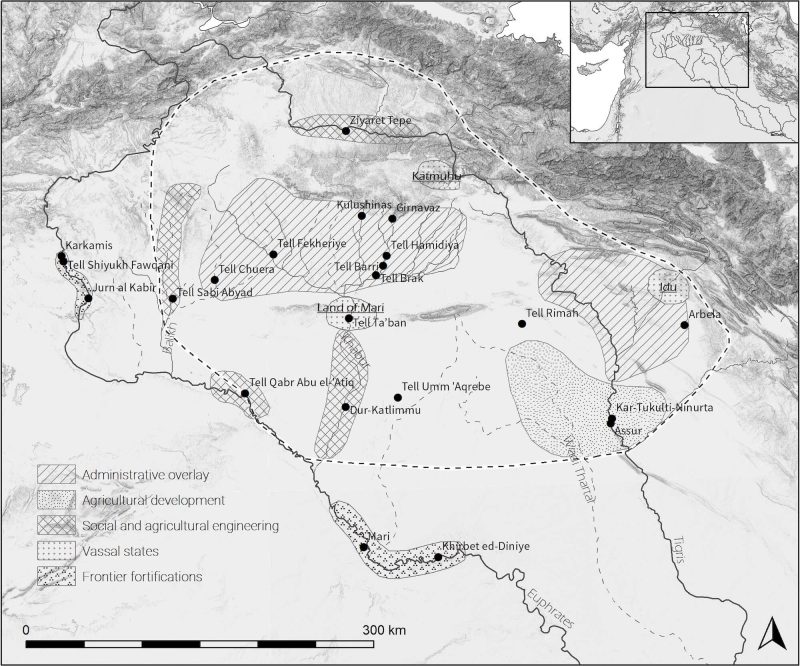
These areas with limited impact, which I categorize as “administrative overlay”, can be contrasted with other areas in which we can document substantial changes in landscapes and societies, amounting to “social and agricultural engineering”, as is evidenced in the Balikh Valley, the Lower Khabur, the Middle Euphrates, and the Upper Tigris. Elsewhere in the empire, we see fortifications along various stretches of the Euphrates and the incorporation of vassal states, as in the polities of Tell Ta’ban, Katmuhu, and Idu. Given this diversity of dealing with regions under Assyrian domination, the phrase “patchwork empire” is a good description of the diverse types of governance and engagement in the Middle Assyrian Empire.
To understand the heterogeneous and patchy nature of the early Assyrian Empire, we need to shift our focus from the capital and court to the reconstruction of the highly diverse configurations on the ground. Elites and commoners, both Assyrian and non-Assyrian people of diverse backgrounds, operated in the context of the Assyrian imperial encounter in various and dynamic ways.
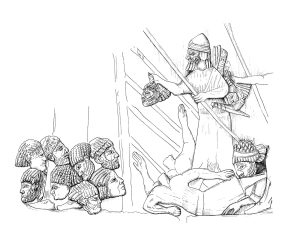
The stacking of Elamite heads. From the Palace of Sennacherib at Nineveh, room 33, BM no 124801. Redrawn by Joanne Porck.
For example, there are good examples of Assyrian elites seizing the opportunities of the conquest of the west to improve their prospects, yet it also seems that some of these western elites were involved in the assassination of the Assyrian king Tukulti-Ninurta I. Some non-Assyrian elites of minor principalities adopted Assyrian names and practices and even married into the Assyrian royal family in order to maintain their position at the head of their small polity. Other elites, however, resisted the Assyrian imperial project, for example by raiding Assyrian towns and caravans. Likewise non-Assyrian commoners would have taken up various positions in Assyria, ranging from outright resistance, to covert resistance and co-optation. While the brutality of Assyrians is well-known and was celebrated, for example, in their own palace relief decoration, the Assyrian imperial project would only have worked if enough people — of various backgrounds — were incentivized to partake in the Assyrian imperial project. In the end, the success or failure of empire is the aggregate result of the activities and choices made by people that live in that empire.
In the final centuries of the Late Bronze Age, the Assyrians managed to forge a highly successful culture of empire that was flexible in its application of imperial practices, such as the ability to re-engineer societies and agriculture where necessary, projects to bolster the imperial core regions including the construction of new capitals, and the investment in transport and military infrastructures. All of these imperial practices continue and are further developed in the subsequent Neo-Assyrian period.
However, if we want to understand the remarkable longevity of the Assyrian Empire and its re-emergence in the Iron Age as the first world empire, we also need to look at what motivated people of Assyrian and non-Assyrian origin and of various social classes to participate in and contribute to the success of that empire, which was without parallel in the history of ancient West Asia and which remains of key significance in global history.
Bleda Düring is Professor of the Archaeology of West Asia at the University of Leiden. His book, The Imperialisation of Assyria: An Archaeological Approach, was published by Cambridge University Press in 2020.
Want To Learn More?
The Geography of the Neo-Assyrian Empire
By Ariel M. Bagg
The Neo-Assyrian Empire of the first millennium BCE comprised a great part of the Middle East. Approximately 3500 Neo-Assyrian geographical names are known. Can these places be localized? Read More
Life of a Salesman: Trade and Contraband in Ancient Assyria
By Mathilde Touillon-Ricci
Conspiracy to commit tax evasion? Smuggling goods on back roads to avoid customs agents? One family put their plans in writing, only on cuneiform tablets. Read More.
 Israelite and Judahite Ambassadors to Assyria
Israelite and Judahite Ambassadors to Assyria
By Shawn Zelig Aster
In antiquity, as today, ambassadors were the representatives of their states in foreign lands. But whose interests did ambassadors who traveled from small states to terrifying empires really represent? Read More
